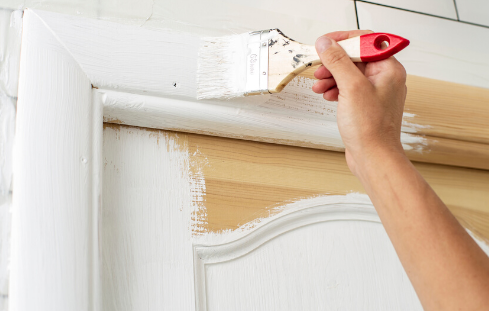
Most Common Painting Mistakes
Posted on May 28, 2020
Painting can be a tricky process and it undoubtedly takes a lot of patience. You might find yourself trying to cut corners if you are embarking on a DIY painting project however, it’s important that you don’t. The little details make or break the paint job and will be the giveaway if the job was done professionally or not. Here are some of the most common painting mistakes so that you can ensure your DIY paint project goes as smoothly as possible.
The Problem: Not sampling the paint before purchasing.
How the paint color sample looks in the store is most likely not how it will look once applied to your walls. The lighting in the room you are painting will have a huge impact on how this shade will actually look. Another thing to consider is what it will look like over a large surface, not just a small paint stroke. Sometimes people will like the color on the sample but when they see it all over the walls, they realize they may have made a mistake.
The Solution
Ask to bring a small sample of the paint home with you. Then paint a chunk of the wall with it. Wait until it is completely dry to gauge the color. After it is dry, look at it a couple of times throughout the day when the lighting might be different. You will want to see how it looks first thing in the morning, mid-afternoon, sunset, and night-time. Now that you know for sure you like the color and shade you can go ahead and confidently purchase the paint and complete your project.
The Problem: Picking the wrong finish
Picking out paint is actually quite stressful. With the wide array of colors, shades, and finishes it can be difficult to navigate which will work best for you and your home. Paint finishes are especially tricky to navigate because different finishes work for different places in your home.
The Solution
Before you go to the hardware or paint store, do your research. Know the differences between the paint finishes and what you think will look best in your home. This way you won’t get overwhelmed while you are in the store and wind up purchasing the wrong ones. If you still are questioning yourself, ask an employee, and the store you are paint browsing to help you navigate your way around the finishes and ask him to explain the differences between all of them.
The Problem: Not priming
Primer creates a consistent surface for the paint to go onto. Primer will also ensure that your paint lasts, and you don’t run into any chipping, peeling, or other unwanted issues later down the road.
The Solution
Simple, use primer! It can seem like a time-consuming unnecessary step, but it truly will make all the difference.






